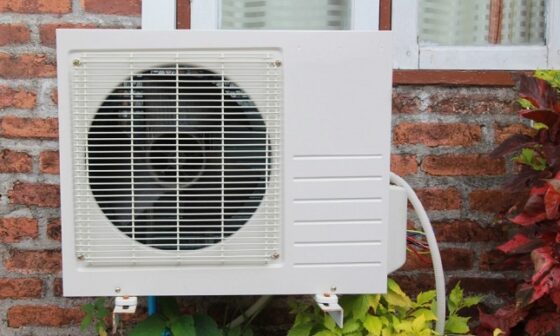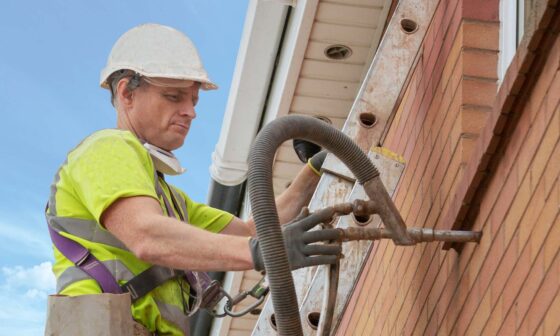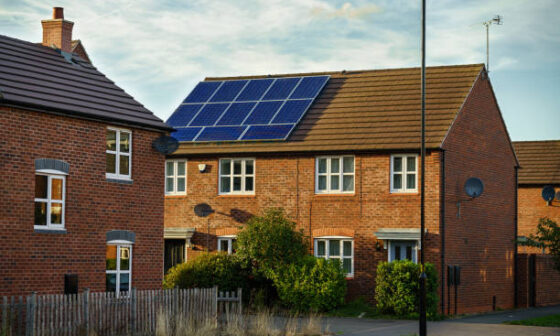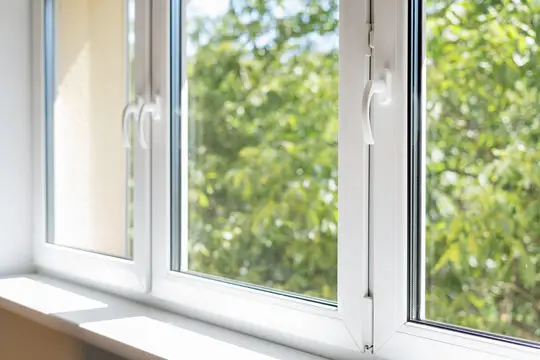
Double glazing involves the use of two panes of glass separated by a spacer, typically filled with an inert gas like argon or krypton. This design forms a sealed unit that enhances thermal insulation, reduces noise, and improves security.
The gap between the panes acts as an insulator, significantly reducing the transfer of heat and cold through the window, making it an essential feature in modern buildings for energy efficiency.
Importance of Checking Efficiency
Ensuring the efficiency of double glazing is crucial for several reasons:
- Energy Savings: Efficient double glazing minimises heat loss in winter and heat gain in summer, leading to lower energy bills.
- Noise Reduction: Properly functioning double glazing can significantly reduce outside noise, creating a quieter indoor environment.
- Increased Property Value: Homes with efficient double glazing are often more attractive to buyers due to the potential for lower energy costs and increased comfort.
Conversely, inefficient double glazing can lead to:
- Higher Energy Bills: Poor insulation properties cause more reliance on heating and cooling systems.
- Reduced Comfort: Drafts and temperature variations can make living spaces less comfortable.
- Potential for Damage: Issues like condensation and seal failure can lead to more significant problems, including mould and structural damage.
How to check efficiency of double glazing?
1. Visual Inspection
A thorough visual inspection is the first step in checking the efficiency of double glazing. Look for signs of condensation between the panes, which indicates seal failure. Check for any visible cracks, gaps, or damage in the seals around the window, as these can significantly reduce the insulating properties of the double glazing.
Discolouration or fogging inside the glass panes is another sign that the unit’s efficiency is compromised.
2. Condensation Check
Examine the windows for condensation both inside the room and between the glass panes. Internal condensation is normal but excessive moisture might indicate poor ventilation. However, condensation between the panes signifies that the seals are no longer airtight, which affects the insulating performance and may require professional attention.
3. Use of Infrared Thermometers
Infrared thermometers are effective tools for assessing the thermal efficiency of double glazing. By measuring the temperature on the surface of the window, you can identify areas where heat is escaping.
Significant temperature differences between the glass and the surrounding frame suggest that the glazing is not providing adequate insulation.
4. Thermal Imaging
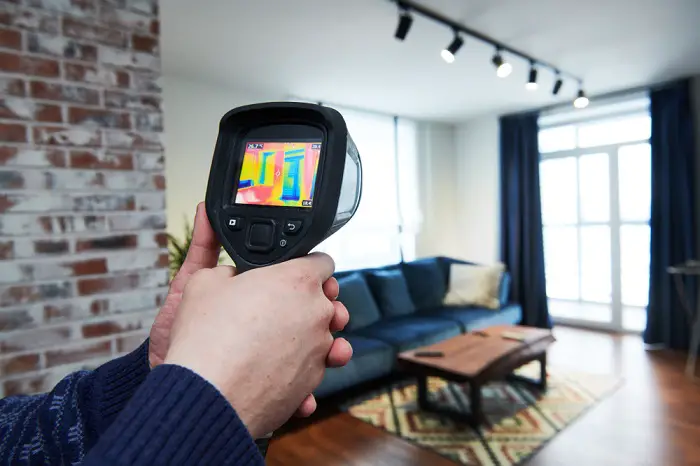
Thermal imaging cameras provide a detailed visual representation of heat loss. By capturing thermal images of the windows, you can pinpoint specific areas where heat is escaping. Bright spots on the thermal images indicate poor insulation, while uniform colours across the window surface suggest good thermal performance.
5. Sound Insulation Test
Double glazing should significantly reduce outside noise. Conduct a sound insulation test by measuring noise levels inside and outside the room with a sound level meter. Close the windows and compare the readings.
A substantial reduction in noise levels indicates efficient sound insulation, while minimal change suggests that the double glazing may be may impaired.
6. Blower Door Test
A blower door test measures the airtightness of your home and identifies air leaks. This test involves installing a blower door fan in an exterior door frame to depressurise the house.
A professional can then measure the amount of air leakage, indicating how well the windows and other parts of the house are sealed. Excessive air leakage around the windows suggests inefficiency.
7. U-Value Measurement
The U-value measures how well a window prevents heat from escaping. Lower U-values indicate better insulation. Tools such as heat flux meters can measure U-values accurately. If your double glazing has a high U-value, it may be time to consider improvements or replacements to enhance efficiency.
8. DIY Draft Detection
Simple DIY methods can help identify drafts around your windows. Hold a lit candle or incense stick near the edges of the window on a windy day. If the flame flickers or the smoke moves, there are likely drafts indicating poor insulation.
9. Seal Integrity Test
Inspect the integrity of the seals around the double glazing. Even minor cracks or gaps can significantly reduce efficiency. Press lightly on the window panes and feel for any movement that suggests loose seals. Properly sealed windows should be firm and unyielding.
Improving Double Glazing Efficiency
Regular Cleaning and Maintenance
Maintaining double glazing efficiency starts with regular cleaning and upkeep. Dirt and grime can compromise seals and the overall function of your windows. Clean the glass and frames regularly with appropriate cleaners to avoid build-up that could damage the seals.
Replacing Worn or Damaged Seals
Seals around double glazing can deteriorate over time, leading to drafts and reduced thermal efficiency. Inspect the seals periodically for signs of wear and tear, such as cracks or gaps. Replace any damaged seals promptly. High-quality replacement seals can restore the airtightness of your windows, improving their insulating properties.
Adding Secondary Glazing
Secondary glazing involves adding an additional pane of glass inside the existing window frame. This extra layer enhances insulation by creating an additional air gap, which reduces heat loss and can improve acoustic performance.
Secondary glazing is a cost-effective way to upgrade single or older double glazing units without replacing the entire window.
Retrofitting with Low-Emissivity (Low-E) Coatings
Low-Emissivity (Low-E) coatings can be applied to existing double glazing to improve thermal efficiency. These coatings reflect heat back into the room, reducing heat loss in winter and heat gain in summer. Retrofitting with Low-E coatings can enhance the performance of your windows without the need for full replacement.
Installing Thermal Curtains or Blinds
Thermal curtains or blinds can provide an additional layer of insulation to your windows. These window treatments are designed to reduce heat loss and block drafts. By using thermal curtains or blinds, you can improve the energy efficiency of your double glazing, especially during colder months.
Applying Window Film
Window film is a thin layer applied to the glass surface to improve insulation. These films can reduce heat loss by reflecting infrared radiation. They also offer benefits such as UV protection and reduced glare.
Ensuring Proper Ventilation
While airtight windows are essential for insulation, proper ventilation is also crucial to prevent condensation and mould growth. Use trickle vents or ensure windows can be opened to allow for airflow without compromising security or insulation. Proper ventilation balances energy efficiency with indoor air quality.
Upgrading to Argon or Krypton Gas Fills
Double glazing units typically use a gas fill between the panes to enhance insulation. Upgrading from air to argon or krypton gas can significantly improve thermal performance. Argon and krypton are better insulators than air, reducing heat transfer and enhancing the overall efficiency of your windows.
